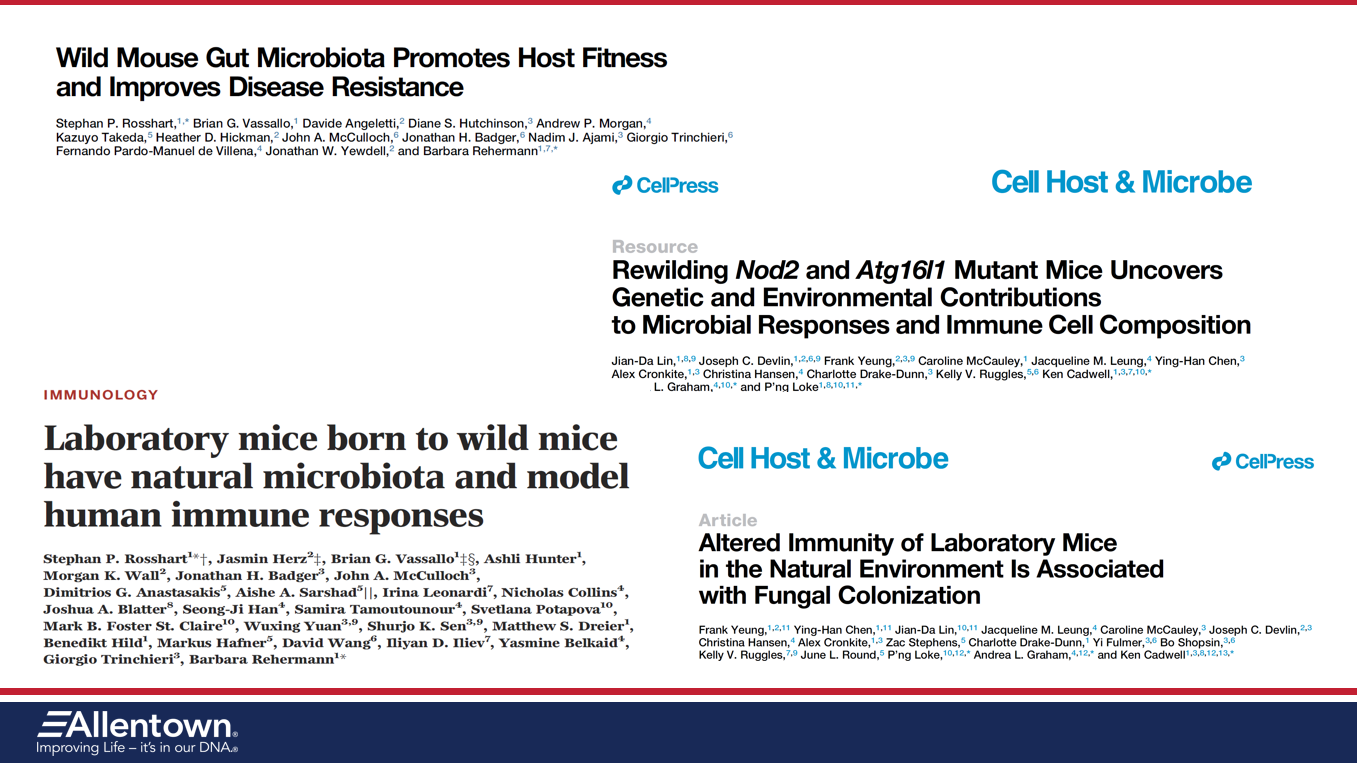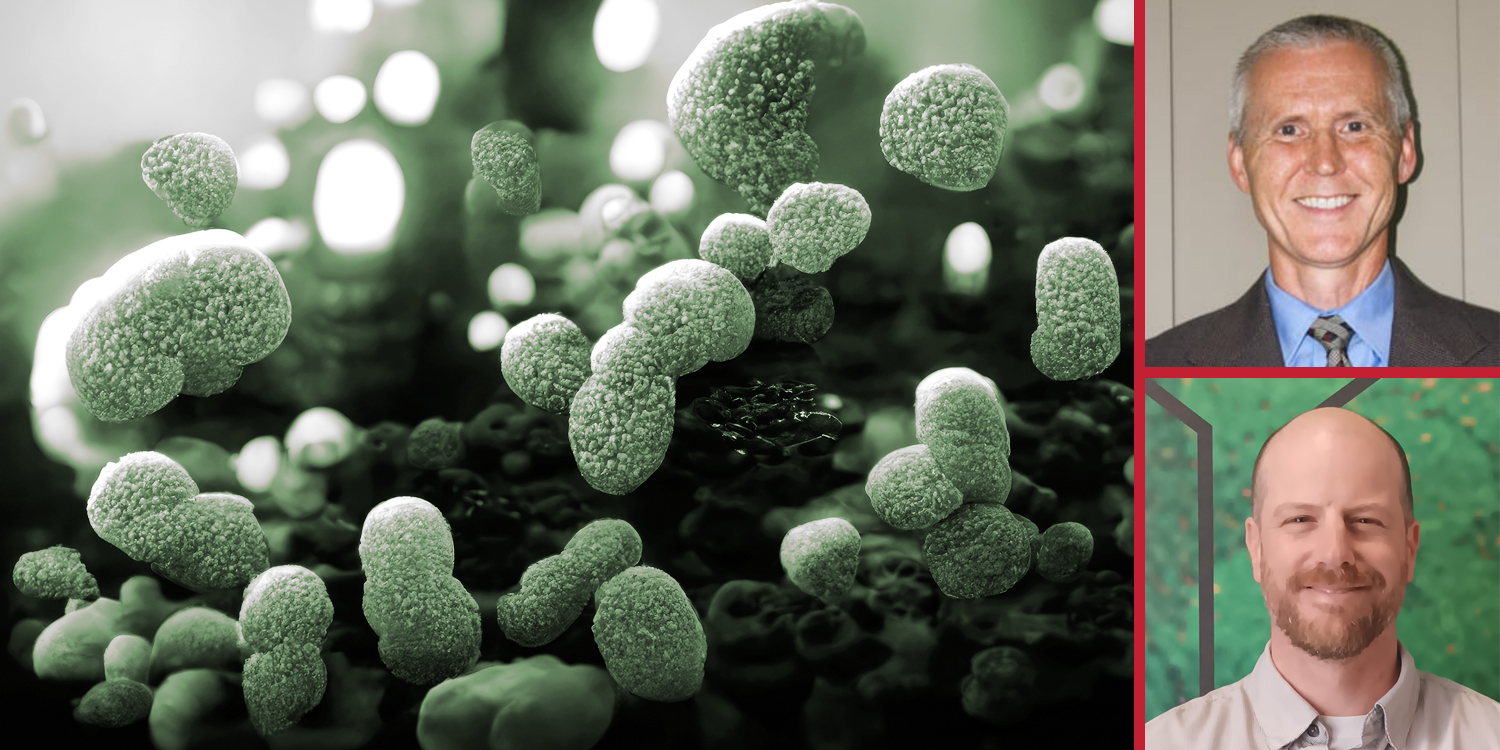In our recent webinar, the “‘Wilding of Laboratory Mouse Gut Microbiota at GSU,” speakers Michael W. Hart, DVM, MS, DACLAM, and Rex A. Howard DVM and DACLAM discuss their groundbreaking research at Georgia State University on wild mouse gut microbiota. During this enlightening session, they discuss the profound impact of “wilding” mouse gut microbiota on research outcomes. As scientific exploration continues to uncover how microbiota shapes the overall physiology of its hosts, we invite you to read on and discover the significance of “wilding” mouse microbiota and its potential to enhance the reliability and reproducibility of research findings.
About the Speakers
Dr. Michael W. Hart has been an integral part of Georgia State University since 2006, where he holds the positions of Director of Animal Resources and University Veterinarian. He earned his DVM degree from Texas A&M University and completed a laboratory animal medicine residency, culminating in an MS in Basic Medical Science from the University of Alabama at Birmingham. Dr. Hart’s board certification in laboratory animal medicine and his role as an ad hoc Consultant for AAALAC International underscore his dedication to the field.
Dr. Rex A. Howard joined the Division of Animal Resources at Georgia State University as the Assistant Director of Clinical Services in February 2022. His journey began at Auburn University’s College of Veterinary Medicine, where he earned his DVM degree. Then, Howard honed his skills through a laboratory animal medicine residency at the Centers for Disease Control and Prevention (CDC) in 2019. Notably, after completing his residency, he continued to serve as an Associate Clinical Veterinarian and Veterinary Medical Officer before accepting his current position at GSU. Dr. Howard is board-certified in laboratory animal medicine.
How The Microbiota Shapes Host Physiology in Lab Mice
The mammalian phenotype is heavily driven by the combination of host and microbiome genes. The microbiomes of free-living organisms (including wild mice and humans) co-evolved with their respective hosts over thousands of years by natural selection creating a symbiotic host-microbe relationship integral to host physiology. The laboratory mouse microbiome evolved over much shorter periods in a sanitized and restrictive environment devoid of numerous microorganisms.
Microbiota – a collection of microbes (mostly bacteria) that live in and on the bodies of vertebrates and invertebrates.
The Hygiene Hypothesis and Wild Mouse Gut Microbiota
The hygiene hypothesis, introduced by David Strachan in 1989, suggests that the rise in inflammatory and autoimmune diseases in the 20th century relates to our reduced exposure to parasites and microorganisms, particularly in developed countries. This idea proposes that when young children don’t encounter enough of these commensal and even some pathogenic microorganisms, their immune systems may not mature properly.
As a result, they could become more vulnerable to immune-related illnesses as they grow up. In simpler terms, the hygiene hypothesis suggests that a bit of dirt and exposure to certain germs in early childhood might be good for our immune systems, helping to protect us from diseases later in life and helping to ensure that our immune system has the proper regulatory mechanisms in place.
Applying this hypothesis to research with rodents shows maintaining excessively sterile environments in laboratory settings might not be conducive to accurate immune system studies. Rodents reared in overly clean conditions could have underdeveloped immune systems, impacting the relevance and applicability of research findings. Therefore, researchers must consider the hygiene hypothesis when designing experiments with rodents to ensure a more comprehensive understanding of immune-related phenomena.
Peer-Reviewed Research Studies on Wild Mouse Gut Microbiota
In our webinar, renowned experts Michael W. Hart and Rex A. Howard delve into peer-reviewed research articles highlighting the advantages of cultivating a more natural state in the gut microbiota of mice, commonly referred to as “wilding.” One compelling rationale for this approach is its enhanced relevance to human well-being. The research findings show studies employing “wilded” mice reveal a host of benefits, which can be summarized as follows:
- Promotes changes in body fat content in mice
- Improves disease resistance of mice
- Alters the immune system of mice
- Better translates to the human condition

How to “Wild” Mouse Gut Microbiota
Presenters Hart and Howard explain some existing methods of “wilding” the gut microbiota of lab mice to achieve the benefits mentioned above. They are as follows:
- Cohousing lab mice with wild or pet shop mice
- Gavaging lab mouse with wild mouse microbiota (recipient is typically a germ-free mouse)
- Embryo transfer (lab mouse embryo/wild mouse surrogate)
- Housing lab mice in an outdoor (semi-natural) environment – done at GSU
- Housing lab mice indoors and providing them exposure to soil collected outside – done at GSU
However, some investigators avoid “wilding” lab mice with pet shop or wild-caught mice. Although viable, Hart and Howard point out some inherent advantages to using “wilded” lab mice. First, they have a defined genetic background. Also, it gives investigators the ability to utilize genetically engineered mice.
Research on Wild Mouse Gut Microbiota at GSU
Hart and Howard are a part of some groundbreaking research on the “wilding” of the gut microbiota of mice at Georgia State University (GSU). Specifically, this research focuses on gut mucosal immunity and the role of the gut microbiota in shaping it. In addition to using mice housed in standard conditions, the lab utilizes “wilded” mice to help improve the translation of the findings to the human condition.
First Wilded Model: Outdoor Housed Mice
The lab’s first “wilded” model was a cohort of WT (Bl/6) mice from the standard vivarium moved to an outdoor enclosure. For this model, the lab let the variables fly. For example, the temperature, light cycle, humidity, and biotic variables were uncontrolled.

Second Wilding Model: Indoor Housed Mice
These mice had exposure to local soil, which was sourced on-site. This setup allowed the researchers to introduce genetically defined, inbred mice to environmental factors in a controlled manner.

Summary of Research Outcomes on Wild Mouse Gut Microbiota at GSU
The research at GSU concluded that their two methods for creating “wilded” mice were effective. They both resulted in significant shifts in gut microbiota and changes in the immune phenotype. These “wilded” mouse models exhibit altered immune system characteristics. Importantly, these wilded mice demonstrated protection against induced colitis. This research underscores the importance of considering the gut microbiome and immune phenotype in model systems and their relevance to the target species for translational research.
Next Steps in Research at GSU
In the next phase of research, they aim to gain a deeper understanding of the microbiome found in different soils – both within and outside Georgia – through sequencing of the microbiota in the soil. Following this, they plan to evaluate the effects of these diverse soil samples on “wilded” mouse models.
To investigate the specific organisms responsible for the observed changes, they will treat the “wilded” mice with various antibiotics and antifungals to eliminate various components of the microbiota. Additionally, they intend to explore how these “wilded” mice respond in induced cancer models and expand examination to include various induced models of colitis. Future research in these areas will help them uncover valuable insights into the impact of environmental factors on the microbiome and immune responses.
Related Blog Story: Which Variables Make Studying the Gut Microbiome of Mice Unique?
If you enjoyed unraveling the mysteries of the mouse gut microbiome, we invite you to delve deeper into our other blog story titled “Which Variables Make Studying the Gut Microbiome of Mice Unique?” There, we explore the intricate factors that make studying these tiny organisms both challenging and intriguing. Keep reading to expand your understanding of the captivating world of mouse gut microbiota and stay tuned for more captivating insights. Your curiosity is the key to unlocking the secrets of this complex ecosystem!

